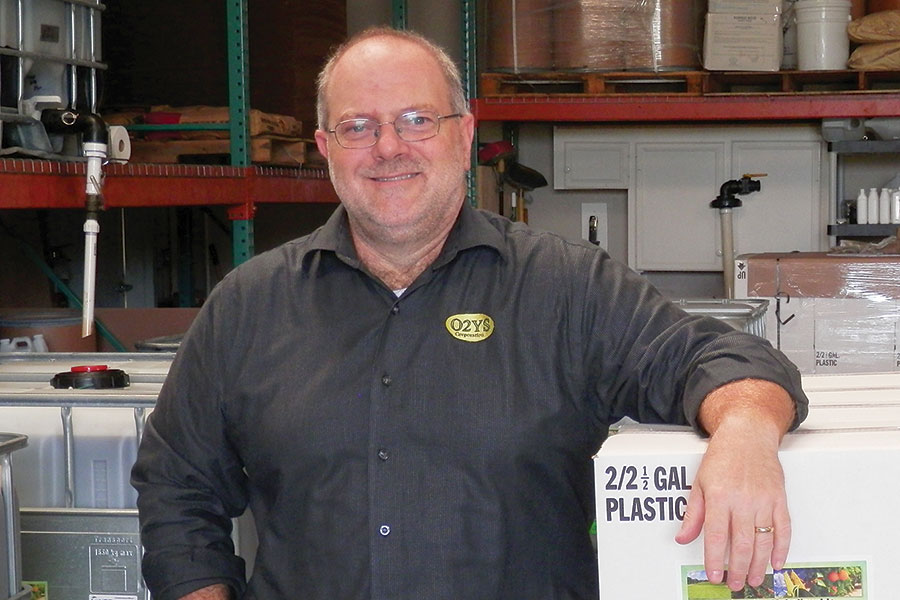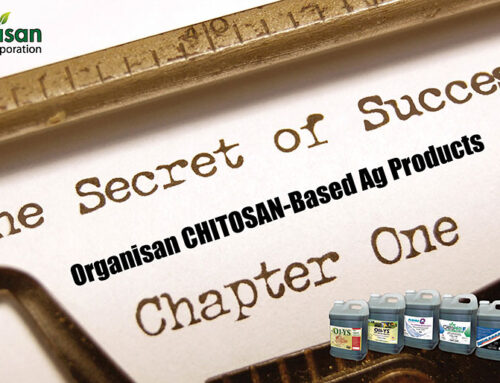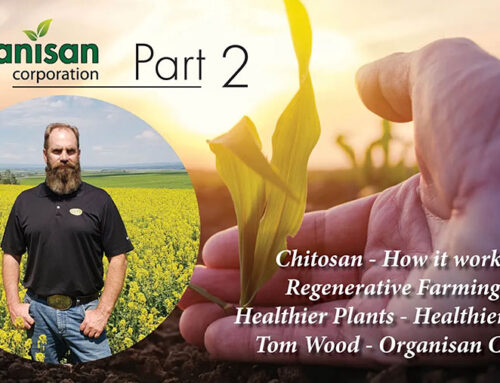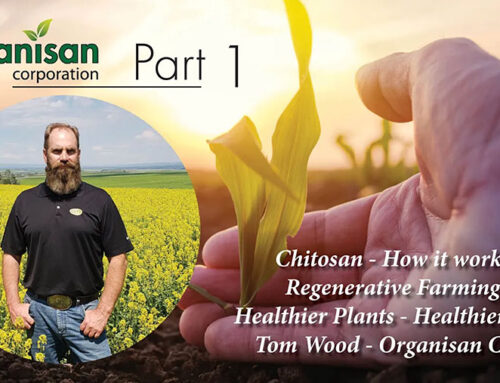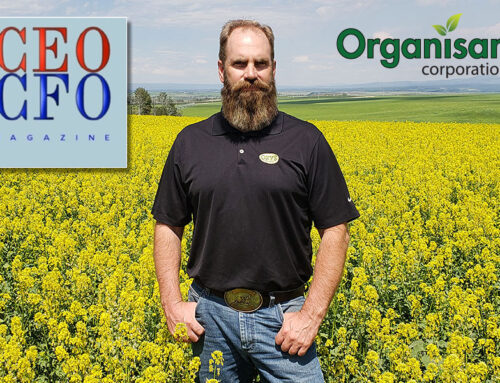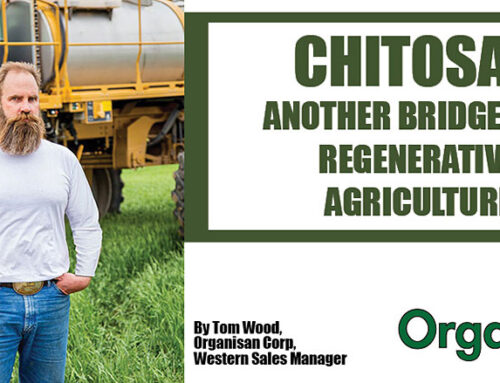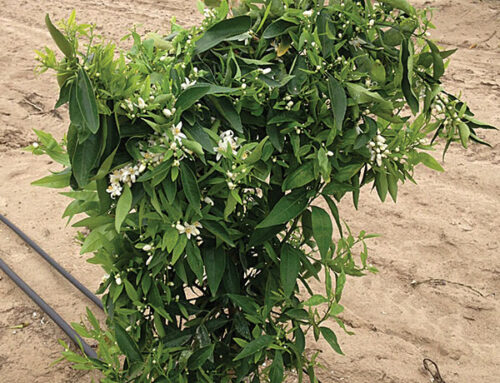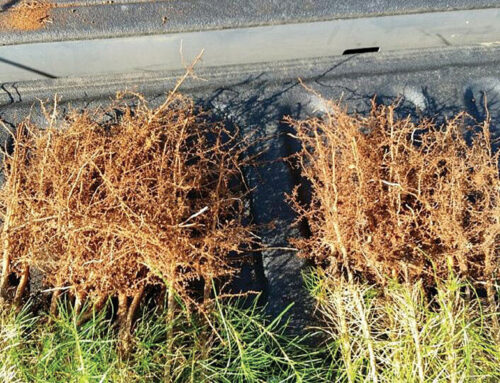Chitosan is a biological polymer that does naturally occur within a few species but the commercial sources are derived from the parent molecule chitin. Chitin is the second most abundant biopolymer (estimated 1011 metric tons annually) on the planet after cellulose. Cellulose, chitin and chitosan are remarkably similar materials. They differ in small respects chemically but these differences lead to significant differences in their respective properties. All three materials are polymers in nature (biopolymers). Like all polymers, cellulose, chitin and chitosan are very large molecules made up of more basic characteristic building blocks (monomers). So polymer simply means many monomers. The “poly” prefix does not index to a specific number. Generally with cellulose, chitin and chitosan, we are talking from the hundreds to thousands of monomers per polymer molecule.
With all this global biomass, there are no deposits of cellulose, chitin or chitosan. Nature recycles all that material back into the carbon and nitrogen cycles.
All three biopolymers are linear. What this means is that the monomers are arranged in a linear fashion, just like beads on a necklace. With cellulose, the monomer is glucose, with chitin, it is N-acetylglucosamine, with chitosan, it is glucosamine. You will see that glucose is a key component in all three monomers. The monomers for chitin and chitosan are glucose derivatives. Cellulose is 100% glucose monomer in its construction. Chitin is predominantly N-acetylglucosamine but there are a couple % glucosamine. Chitosan has a majority of glucosamine but the ratio of glucosamine to N-acetylglucosamine varies greatly. What fundamentally differentiates chitosan from chitin is that chitosan is soluble in benign dilute organic and a few mineral acids. Chitin is not soluble in any of these solvents. This facile solubility is what makes chitosan so useful over chitin. Interestingly, the chemical bond in all three of these polymers joining the monomers in long linear chains is exactly the same.
From a commercial standpoint, most chitosans are manufactured from shellfish sources. These sources are often concentrated, cheap to negative cost at the front end.
Structurally, there are three crystalline forms of chitin that have been identified. The most common is alpha (α) chitin. This chitin is found in all arthropod and fungal sources. Alpha chitin is a tight arrangement of the polymer strands. The second is beta (β) chitin. Beta chitin is found in a structure of squid called a pen. Beta chitin is a looser crystalline arrangement of the polymer strands. The gamma (γ) is much rarer and gets scant mention in the literature. There is no commercial source. Regardless of the source or native crystalline arrangement, at the end of the day, chitin is chitin, a polymer that is virtually entirely made of N-Acetylglucosamine units.
Manufacture of chitosan (from shellfish) involves three main stages and is a chemical process. The first is demineralization where the calcium based minerals are dissolved out. The second step is removal of protein (deproteinization). The final step is called deacetylation. This is a harsh chemical process where acetyl groups are removed from the N-acetyl glucosamine monomers in the chitin polymer yielding glucosamine. Deacetylation is not 100% efficient so not all the N-acetyl glucosamine is converted to glucosamine. These are some exotic process techniques such as ionic liquids that have been investigated but I don’t think have been commercialized on any significant scale. One interesting claim with these approaches is there are no hazardous waste streams. Enzymatic processing has also been investigated (green chemistry approach). From what I can tell, the enzymatic deacetylation is not as efficient as the chemical process.
Extraction from fungi takes a different path. There is no mineral to remove and protein is less of a concern but have to be removed. Since chitin has to be removed from the fungal cell wall, there are other components in that matric which have similar chemistry and resilience. Cargill marketed a “vegetal, ie non animal source) of chitosan. They used spent Aspergillus mycelia from their citric acid production as the initial feedstock.
Chitosan is a largely generic term describing a polymer class that largely exhibits variable ranges of characteristics. Taken together, these characteristics are used to describe qualities of chitosan. One of the major criteria is “Percent Deacetylation” (%DA) or “Degree of Deacetylation” (DDA). During deacetylation, removal of the acetyl groups from chitin is a progressive one. Therefore, one starts with a polymer that is predominately acetylated (minimally deacetylated). As deacetylation progresses, the balance reverses where the resultant product is more deacetylated and less acetylated. In practical terms, the material being processed gradually becomes less chitin and more like chitosan. What defines the material as chitosan is its solubility. Chitins that have been deacetylated to around 55% and above begin to exhibit solubility. So, the transition from chitin to chitosan is not immediate but gradual. Technical grades of chitosan are usually 80%DA or less. Food grades are higher to above 90%. Higher grades like cosmetic, biomedical and pharmaceutical grades are above 95%DA.
Molecular weight is another quality parameter. While molecular weight is important, it is critical to understand what this means. Molecular weight is an indication of polymer chain length. It is important to understand that in any chitosan sample, polymer chain length is not uniform across the sample. Far from it. The sample will represent a population of molecular weights (polymer lengths). The distribution may be tight and it could be less so. The molecular weight figure is an average measure. Usually, molecular weight is determined indirectly by measuring viscosity and performing some calculations. It is simply not practical to screen chitosans at the molecular level to generate products of “exact” molecular weights. From a lab perspective, individual molecular weights and their relative quantities in a sample can be determined via chromatographic or other separation/ detection methodologies. Commercially this is impractical. Generally the processing conditions, treatment/ age of the raw shell and other factors can influence the resultant molecular weight.
Viscosity is the resistance to flow. Chitosan solutions do exhibit viscosity. The measured viscosity will be a function of concentration, %DA and molecular weight. There are even ideas that patterns of deacetylation (eg random deacetylation along the chain, blocks of polymer deacetylated/ acetylated regions) may influence viscosity. Generally with polymeric chitosans, solutions above 2-3% become viscous to a point of being difficult to process and mix. The viscosity generated by chitosan in solution is due to these large polymer chains sliding over each other.
Recently, chitosan oligomers have entered the market. Oligomers (or oligos) are short chain fragments of chitosan. Oligo is a Greek prefix meaning “few”. There is no exact number that defines “few”. There are a couple of formulation advantages to oligos. The shorter chain ones are water soluble (approximately less than 10-12 glucosamines in the oligo chain). These shorter chains allow for a greater amount to be added to formulations without incurring the viscosity penalty. As such, solutions of 50% and higher can be achieved.
Since November 2022, EPA made a decision where chitosan can be used in minimum risk use (also known as 25(b)) pesticide formulations. Prior to this date, EPA designated chitosan as a fungicide and therefore regulated it as a conventional pesticide (it still does when chitosan is used in a conventional pesticide formulation as an active ingredient). In this short period, we know of three other 25(b) products on the market. One is 5.75%, the second 10% and recently we have come across one at 65.5%. There is a play on words going on here. Chitosan has been known in agriculture for a few decades now. Conventionally, it has always been understood that chitosan is the polymer. These new products are using the term chitosan but omitting the “oligomer” qualifier. These products do not seem to exhibit any excessive viscosity. Our only conclusion (and based on our experience) is that these other 25(b) products are either partially or completely solutions of oligomeric chitosan.
There are a lot of things to understand about our company and its products. First, we are a market leader. We innovate. We are not a “me too” company which seems to be the trend with our competitors. When we started our company, there were two “chitosan” products. Both were basically chitosan solutions. Since our inception, we have never encountered these products in the field and they have most likely been withdrawn since then.
Numerous aspects separate us from others in the market. Since chitosan is such an important raw material for us, we don’t source from the cheapest vendor. Our chitosans are manufactured from shellfish exoskeletons that are sustainably harvested. Our chitosans are top quality food grade material. In addition, our chitosans enjoy a “Generally Recognized As Safe” (GRAS) status from the US FDA. Our Chitosans are also compliant with California Proposition 65, that state’s Safe Drinking Water and Toxic Enforcement Act of 1986. Chitosan quality has a significant impact on performance.
Unlike others, we do not view chitosan as just a name or the latest trend or buzzword we have encountered. Chitosan is a science and a technology with a history. Chitosan is not a monolithic, one size fits all material. Far from it. Organisan Corporation has understood this from the beginning and is at the forefront developing specific chitosan-based products for a number of agricultural applications. Chitosan is known to be active in many areas. For example, Chitosan is recognized as a plant growth regulator, a plant defense booster, an elicitor, has fungicidal and antimicrobial properties and is also employed as a sticker agent in adjuvant formulations. Chitosan works well with the natural biology of the soil and has been employed with much success with several commercial beneficial biological agents such as Beauveria bassiana in combatting the deleterious effects of many plant pathogens as well as harmful insects. Other notable examples include Pseudomonas sp, Bacillus sp, Trichoderma sp. Metarhizium anisopliae and Pochonia clamydosporia.
As a natural material, nature has a way of processing the material so Chitosan is biodegradable, unlike synthetics that persists in nature. As natural carbohydrate polymers go, Chitosan is a highly functional polymer. A cursory internet search reveals a plethora of activities and applications in a number of industries. The literature is rich with research on chitosan applications and development of novel derivatives with characteristically unique functionality and properties. Most of this is based on chitosan’s cationic nature (a rare feature in carbohydrate biopolymers) . It is this cationic property that allows chitosan to be soluble in various liquids that are bio friendly and biocompatible. Chitin can be solubilized as well but those solvents are much harsher and not biocompatible. It’s the facile solubility and biocompatibility that greatly increases the value of chitosan over chitin.
We don’t stop there. We constantly refine our manufacturing processes to give you top quality, functional product, tailored to your needs. We leverage our proprietary manufacturing, technical expertise and technology to modify our manufacturing processes to create specifically crafted products with tailored chitosan properties. We constantly support and improve our manufacturing with lab work testing formulas, seeking efficiencies, testing new inerts and actives. All this builds on the already impressive experience we have with chitosan. Unlike our competitors, our products are not just chitosan solutions of various claimed concentrations. Chitosan is a functional foundational raw material for us. Our products are specifically formulated and feature chitosan as a main active component along with other actives and proprietary inerts. Our products feature chitosan incorporated in a formulation that maximizes its bioavailability, its penetration in the soil and plant tissues. Our products include proprietary inerts that maximally enhance Chitosan effectiveness that is not seen with chitosan alone. Our chitosan based products work in concert with many soil beneficials. Together, this combined synergy creates a far more rhizosphere friendly environment, keeping pathogens and pests at bay. Our chitosan products are the result of extensive research, product refinement and field testing. This means, all chitosan products ARE NOT the same, especially products we manufacture. We take the time and effort to consult and listen to our customers and formulate chitosan based products that suits their needs. And we don’t walk away. We are committed to you, our customers, we work closely through all aspects of your crop’s growing cycle. We listen to you, advise and recommend tailored strategies with tailored products to deliver the results you want.
By working with us, this is what you can expect and we will deliver. We are your chitosan experts. This is not a groundless claim. We are not newcomers. The Organisan team has over 80 combined years’ experience under one roof that comprehensively covers chitosan from raw material acquisition, manufacturing, processing, product development, R&D, sales, marketing, agronomy, and application. We have sales support 24/7. We back that sales team with technical sales support. We have invested the last 12 years developing products and applying them with success all over the country and internationally, on various crop types, environments, geographies. We know chitosan, we know how to sell in the markets we service and we know how to apply it. We maintain an in-house library of over 6000 publications gathered from the literature. This resource is available to our personnel and we are constantly searching the literature for applications, technology and other aspects of chitosan that apply to our business. So when you do business with us, you are not just buying another chitosan product, you are getting that specifically formulated product along with accessing our experiences and expertise. We are on your side and want nothing more than to see your success. That is our commitment to you.
So, if you’ve tried “chitosan” products and did not see the outcome you wanted, there’s a good chance your product was not made specifically for your use. That’s why you should invest your hard earned dollars with a team of 80+ years’ experience backing the right product to maximize your results. And you’ll only get that knowledge and experience with the Organisan team and/or our authorized representatives.
If you have further questions, please do not hesitate to contact me.
Best regards,
André N. Blanchard, Ph.D.

